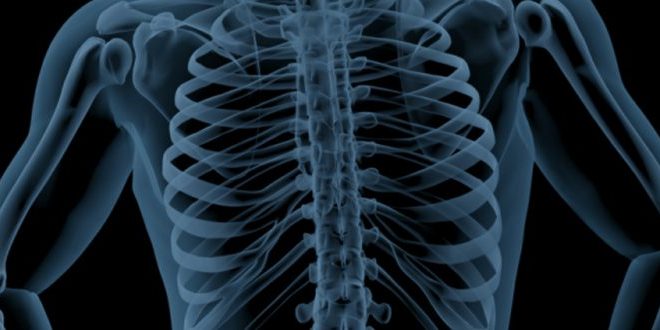Myofascial Release: Alleviating Chronic Pain
Chronic pain often persists when fascial restrictions—tight, dehydrated connective tissue—go unaddressed by conventional treatments. Myofascial release uses sustained pressure and specialized tools to break up adhesions, restore tissue glide, and improve circulation. By targeting fascia’s impact on nerves and muscles, it releases trigger points, reduces inflammation, corrects compensatory patterns, and calms the nervous system. This root‑cause approach offers lasting relief where stretching, massage, and medications fall short.

Chronic pain affects millions of people every year, and for many, the frustration runs deep. Unlike acute pain—which is your body’s immediate response to injury or trauma—chronic pain lingers for weeks, months, or even years. It can come and go or remain constant, but what makes it most challenging is that it often sticks around long after the original injury has healed.
This kind of lingering pain doesn’t always respond well to traditional methods like rest, stretching, or medication. Many patients bounce from one therapy to another, trying pain relievers, injections, or even surgery, only to find temporary relief—if any. What’s often overlooked in this search for solutions is the role of fascia, the body’s connective tissue system.
This is where myofascial release makes a difference. It’s a hands-on, results-focused therapy that works directly with the fascia to release restrictions, restore movement, and calm the nervous system. Rather than just managing symptoms, myofascial release targets one of the most overlooked root causes of chronic pain—and gives your body the chance to truly heal.
Understanding Fascia: The Overlooked Pain Generator
Fascia is one of the most important—and most overlooked—structures in the body. It’s a dense, elastic web of connective tissue that wraps around and through every muscle, bone, joint, and organ. Think of it as the body’s internal scaffolding system, providing structural integrity, supporting movement, and keeping everything connected in a coordinated way.
What Does Fascia Do?
Fascia isn’t just structural—it’s dynamic. It plays a vital role in:
- Stability: Maintaining alignment and supporting posture
- Fluidity: Allowing muscles and joints to glide smoothly during movement
- Coordination: Helping muscles fire in sequence for efficient movement
It also houses countless nerve endings and sensory receptors, making it deeply connected to the nervous system and how we perceive pain.
What Happens When Fascia Gets Stuck?
Healthy fascia is flexible and pliable. But over time, it can become restricted—tight, sticky, or dehydrated. These restrictions can pull on muscles, compress joints, and irritate nerves, leading to widespread tension and discomfort. Common causes of fascial restriction include:
- Poor Posture: Slouching or sitting for hours creates imbalances and tension in the fascial lines, especially in the neck, shoulders, and lower back.
- Injury or Surgery: Scar tissue forms within fascia, leading to adhesions that limit mobility and trigger ongoing pain.
- Repetitive Stress: Repeating the same motion—whether it’s running, lifting, or typing—can overload certain fascial areas and lead to chronic stiffness.
- Emotional Trauma: Stress and anxiety often manifest physically, causing the body to guard or brace, which tightens the fascia over time.
Signs Your Pain May Be Fascial in Nature
Common Clues That Fascia May Be Involved
Pain That Moves or Radiates Unpredictably
One day it’s your shoulder, the next it’s your hip—or the pain travels down a limb in a pattern that doesn’t match typical nerve compression. Fascial restrictions can create lines of tension that “pull” pain across different areas of the body, often confusing both patients and providers.
Chronic Stiffness That Doesn’t Respond to Stretching
If you stretch regularly but still feel tight, especially in the same places, fascia may be the culprit. Unlike muscles, fascia doesn’t respond well to passive stretching alone. It requires sustained pressure or movement-based release to regain elasticity and glide.
Recurring “Knots” or Trigger Points
Those stubborn spots that always seem to come back after a massage? They’re often fascial trigger points—high-tension areas within the fascia that refer pain and limit muscle function. Without releasing the underlying restriction, the relief is always temporary.
Decreased Range of Motion Despite Exercise or Massage
If you’re moving, stretching, and even foam rolling but still feel restricted, your fascia may be stuck. This dense tissue can act like a straightjacket around muscles and joints, preventing full movement no matter how strong or flexible you try to be.
Conditions Commonly Linked to Fascial Dysfunction
- Fibromyalgia – Widespread pain and tenderness may be connected to hypersensitive fascia and chronic inflammation.
- Myofascial Pain Syndrome – Characterized by deep aching and trigger points throughout the body.
- TMJ Dysfunction – Fascial tension around the jaw and neck often contributes to grinding, clenching, and jaw pain.
- Chronic Back or Neck Pain – Recurrent tension and tightness that lingers despite adjustments or therapy is often rooted in fascial imbalances.
- Tension Headaches – Tight fascia across the neck, scalp, and upper back can compress nerves and blood vessels, triggering persistent headaches.
What Is Myofascial Release?
Myofascial release is a specialized, hands-on therapy designed to release restrictions in the fascia—the connective tissue that surrounds and supports your muscles, joints, and organs. When fascia becomes tight, dehydrated, or stuck due to injury, poor posture, or chronic stress, it restricts movement and contributes to pain. Myofascial release works by applying gentle, sustained pressure to these areas, helping restore balance, mobility, and proper function.
How It Differs from Traditional Massage
While massage therapy focuses primarily on relaxing the muscles and nervous system, myofascial release is aimed at functional correction. Massage might provide short-term relief from tension, but myofascial work is designed to address the structural and neurological patterns that are causing pain in the first place. It’s not about chasing symptoms—it’s about correcting the system.
- Massage = Relaxation
- Myofascial Release = Restoration and Realignment
Techniques Used at Mountain Movement
At Mountain Movement Chiropractic & Natural Health, myofascial therapy is never a one-size-fits-all approach. We tailor treatment based on your specific restrictions and goals, using advanced tools and techniques, including:
- Myofascial Release Therapy (MRT):
Hands-on pressure and stretch techniques that restore elasticity and mobility to stuck fascia. - IASTM (Instrument-Assisted Soft Tissue Mobilization):
Precision tools are used to detect and break up scar tissue and fascial adhesions, stimulating healing and tissue remodeling. - Trigger Point Therapy:
Focused pressure applied to painful “knots” or hyperactive areas of fascia and muscle to reduce referred pain and improve muscle function. - Trigenics:
A neuromuscular reset technique that combines movement, resistance, and brain-body retraining to correct compensation and restore balance. - PNF Stretching (Proprioceptive Neuromuscular Facilitation):
Combines active movement and muscle engagement to safely increase range of motion and rewire muscle control. - Percussion Therapy:
Rapid, pulsing vibration used to stimulate blood flow, reduce surface tension, and support deeper fascial release.
How Myofascial Release Helps Alleviate Chronic Pain
Releases Trigger Points
Chronic pain often involves trigger points—tight, irritable spots in the fascia that create localized or referred pain. These knots can form from stress, overuse, or past injuries, and they often don't go away with stretching or massage alone. Myofascial release applies sustained pressure to break the cycle of tension, allowing muscles to reset and pain to dissipate.
Improves Tissue Mobility
Fascial restrictions act like a straitjacket on the muscles and joints. Over time, they limit mobility, create stiffness, and compress nearby nerves. Myofascial therapy restores the natural glide between tissues, freeing up joint space and allowing nerves and muscles to move without obstruction—reducing both pain and mechanical stress.
Reduces Inflammation
Tight fascia can compress lymphatic vessels and blood flow, which slows healing and increases tissue irritation. Myofascial release improves circulation and promotes the movement of lymphatic fluid, helping to flush out inflammation and bring fresh nutrients to damaged or overloaded areas. This supports the body’s natural healing response and reduces swelling over time.
Corrects Compensations
When one area of the body is restricted, others are forced to pick up the slack—leading to faulty movement patterns and chronic strain. Myofascial therapy identifies these areas of imbalance and addresses them directly, allowing the body to move more efficiently. This prevents wear and tear and helps relieve stress from overworked muscles and joints.
Calms the Nervous System
Fascial tension doesn’t just affect movement—it also stimulates the nervous system. Chronic tension can keep your body in a low-grade state of fight-or-flight, amplifying pain signals and stress. Myofascial release helps activate the parasympathetic system (your rest-and-repair mode), calming the body, lowering sensitivity, and allowing true recovery to begin.
Relief Is Possible When You Treat the Root
Chronic pain can be exhausting—physically, mentally, and emotionally. It often comes with years of unanswered questions, temporary fixes, and the constant fear that nothing will truly help. But what if the real issue hasn’t been fully addressed?
For many people, fascial dysfunction is the hidden cause of their pain. It doesn’t show up on imaging and it’s rarely talked about in conventional care, but it has a profound impact on how you move, feel, and function every day. Tight, restricted fascia can compress nerves, limit circulation, and lock the body into unhealthy movement patterns—creating pain that just won’t go away.
Myofascial therapy works by treating this dysfunction at the root. It releases tension, restores balance to the tissue system, and calms the nervous system so your body can finally begin to heal—naturally and fully.
📞 Call now: (864) 448-2073
📍 Visit us: 1901 Laurens Road, Suite E, Greenville, SC 29607
🌐 Book online or learn more: https://mountainmovementcenter.com
🗓️ Request your full-body movement & fascial assessment to uncover the hidden cause of your pain and start your path to real relief.
📲 Stay connected for educational tips and patient success stories:

We Treat the
Toughest Cases
We'd love to talk with you about yours. Ask us anything and we will get back to you with a detailed answer about your case.

.jpg)




